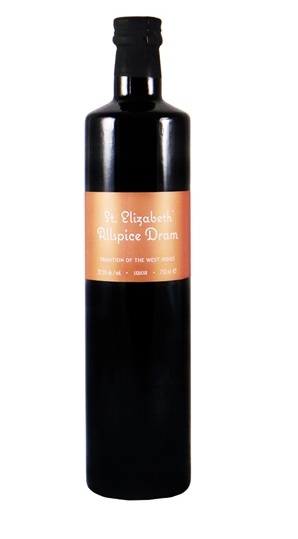 |
| The recipe as I received it, on the back of a menu |
Before we dive into the drink itself, a quick word on bitters, and their use as cocktail ingredients. Bitters, as we have them today, are the descendants of the various health tonics and miracle potions that were made popular by charlatan street vendors. They have a mixture of botanical extracts (most popularly gentian and cinchona bark) steeped in high-proof alcohol. Mixing bitters with wine was popular in the 1800s (usually for their supposed medicinal benefits). From this was born the modern cocktail, which was composed of "spirit, sugar, water, and bitters." The Old Fashioned is the premier example of an early cocktail with spirit (originally brandy, now commonly bourbon), water, sugar (now sometimes combined as simple syrup for easier mixing), and bitters (Angostura in this case).
Peychaud's bitters were made by an apothecary in New Orleans (originally from Haiti) named Antoine Amédée Peychaud. Like Angostura bitters, Peychaud's bitters have a gentian base, but they are sweeter and more floral. Peychaud's bitters are essential for a proper Sazerac. Peychaud's bitters are fairly potent - clocking in a 35% ABV (or 70 proof). This is comparable to many full-bodied spirits (which usually are bottled around 40% ABV/80 proof). Angostura is even more potent at 45% ABV/90 proof. Despite the high alcohol content, bitters can be purchased by minors. In Minnesota, where supermarkets are forbidden to sell anything but non-alcoholic beer (hello St. Pauli Girl Non-Alcoholic Malt Beverage), bitters can be found on the shelf and purchased every day of the week, even Sundays (hello Blue Laws, which have followed me to Indiana). This is because bitters are considered "unpalatable" in large quantities, much like mouth wash and cough syrup. A determined teen might still go after a bottle of bitters and try to stomach it out for the buzz, but the price (8-12 dollars for a 5 oz bottle) is prohibitive, as is the laxative qualities that some bitters ingredients possess in larger doses.
 Despite this, some bartenders recently have been experimenting with using bitters as a featured cocktail ingredient. Bitters are usually measured by "dashes," and the tops on bitters bottles are designed to regulate the flow of liquid using a drop or dash (and when the bottle top goes bad, look out - you might wind up with a brown drink or stained hands!). One dash is roughly 1/32 oz, and most drinks call for a maximum of 3-4 dashes (1-2 is more common). However, there are a category of "bitters-forward" drinks that contain as many as 1-2 oz of bitters! These drinks appeal to the "quadruple IPA" crowd that pride themselves on being able to cut through immensely bitter flavors for a full-palette experience, but I would never call such a drink my cup of tea (remember, I got into bartending because I found most beer to bitter for my taste - that's why I can fairly well guarantee I'll never have a Negroni as the drink of the month). This doesn't mean that all bitters-rich drinks are off the table, however - and the drink this month is one I am happy to recommend to anyone!
Despite this, some bartenders recently have been experimenting with using bitters as a featured cocktail ingredient. Bitters are usually measured by "dashes," and the tops on bitters bottles are designed to regulate the flow of liquid using a drop or dash (and when the bottle top goes bad, look out - you might wind up with a brown drink or stained hands!). One dash is roughly 1/32 oz, and most drinks call for a maximum of 3-4 dashes (1-2 is more common). However, there are a category of "bitters-forward" drinks that contain as many as 1-2 oz of bitters! These drinks appeal to the "quadruple IPA" crowd that pride themselves on being able to cut through immensely bitter flavors for a full-palette experience, but I would never call such a drink my cup of tea (remember, I got into bartending because I found most beer to bitter for my taste - that's why I can fairly well guarantee I'll never have a Negroni as the drink of the month). This doesn't mean that all bitters-rich drinks are off the table, however - and the drink this month is one I am happy to recommend to anyone!
Peychaud's Punch features a strong dose of Peychaud's bitters - 10 heavy dashes, which comes out to somewhere between 1/4 and 1/2 oz, depending on who is doing the dashing. While you can free-measure your bitters using the dash top, for consistency's sake, I would recommend using a jigger to measure your bitters. I use 1/3 oz (somewhat splitting the difference) in my recipe. It adds sweetness to the drink with 1/2 oz of simple syrup, and additional sweet and herbal flavors with 1/2 oz of Green Chartreuse (because of this, you could expect the drink to be green, but the bitters have such a strong color that our finished product has a beautiful deep red/purple hue). The base of the drink is mescal, which supplies a smoky undertone. Finally, lime juice provides a little acid to cut the sweetness. The resulting concoction starts smoky, stays sweet on the tongue, and has just the slightest bitter after-taste (in a good way, not in a hop-bomb IPA way). Here is the recipe for your Peychaud's Punch:
In a mixing glass, combine the following:
1 1/2 oz Mescal
1/2 oz fresh squeezed lime juice
1/2 oz simple syrup
1/2 oz Green Chartreuse
1/3 oz Peychaud's Bitters (10 heavy dashes)
Shake over ice, strain and serve in a coupe glass.
I hope you enjoy your Peychaud's Punch!

















